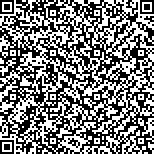| 引用本文: | 张武昌,高尚武,孙 军,陶振铖,杨 波,孙 松.南海北部冬季和夏季浮游哲水蚤类群落.海洋与湖沼,2010,41(3):448-458. |
| |
|
| |
|
|
| 本文已被:浏览 3443次 下载 3160次 |

码上扫一扫! |
|
|
| 南海北部冬季和夏季浮游哲水蚤类群落 |
|
张武昌1, 高尚武2, 孙 军2, 陶振铖2, 杨 波2, 孙 松2
|
|
1.中国科学院海洋研究所海洋生态与环境重点实验室,国家海洋局海洋生态系统与海洋生物地球化学重点实验室;2.中国科学院海洋研究所海洋生态与环境重点实验室
|
|
| 摘要: |
| 根据2004 年2 月10 日—3 月6 日(冬季)和8 月26 日—9 月6 日(夏季)在南海北部的两个航次中用浮游动物大网垂直拖网采集的浮游动物样品, 对该海域的浮游桡足类群落进行分析。结果表明, 共发现哲水蚤类70 种, 冬季航次62 种, 夏季航次62 种, 种类的季节变化不大。在海洋站位, 每个站位出现的哲水蚤类为4—41 种, 近岸的站位出现的种数少, 向远海逐渐增多。哲水蚤总丰度冬季为10—353 个/m3, 夏季为13—205 个/m3, 从近岸到远海减少。哲水蚤生物量干重冬季为0.80—33.39mg/m3, 夏季为0.64—5.81 mg/m3, 从近岸到远海减少。种类多样性指数采用香农-威弗指数, 冬季为0.80—4.39, 夏季为2.12—4.66, 在近岸较低, 远海较大。优势度大于2%的种被认为是优势种。冬季的优势种为: 中华哲水蚤(Calanus sinicus)、小拟哲水蚤(Paracalanus parvus)、狭额真哲水蚤(Subeucalanus subtenuis)、弓角基齿水蚤(Clausocalanus arcuicornis)、长尾基齿水蚤(Clausocalanus furcatus)、达氏波水蚤(Cosmocalanus darwini)。夏季的优势种(类)为: 微刺哲水蚤(Canthocalanus pauper)、小哲水蚤(Nannocalanus minor)、狭额真哲水蚤、亚强真哲水蚤(Subeucalanus subcrassus)、小拟哲水蚤、锥形宽水蚤(Temora turbinata)、柱形宽水蚤(T. stylifera)、异尾宽水蚤(T. discaudata)。这些种在各个站位占总丰度的15%—92%(平均为48%)。优势度大于5%的种有中华哲水蚤、小拟哲水蚤、狭额真哲水蚤、锥形宽水蚤、异尾宽水蚤, 各种的丰度(除狭额真哲水蚤外)从近岸向远海降低。在远海深水的站位, 出现了热带暖水种乳点水蚤属的腹突乳点水蚤(Pleuromamma abdominalis)、瘦乳点水蚤(P. gracilis)和粗乳点水蚤(P. robusta)。哲水蚤目种丰富度、桡足类丰度、多样性指数、优势种丰度从近岸到远海的变化趋势, 反映了桡足类群落从近岸到远海的演替。
|
| 关键词: 哲水蚤目, 桡足类, 多样性, 南海 |
| DOI:10.11693/hyhz201003024024 |
| 分类号: |
| 基金项目:国家自然科学基金重点项目, 90711006 号和90211021 号; 国家海洋局海洋生态系统与海洋生物地球化学重点实验室开放基金项目, LMEB200803 号。 |
附件 |
|
| PLANKTONIC CALANOID COMMUNITY IN THE NORTHERN SOUTH CHINA SEA IN WINTER AND SUMMER |
|
ZHANG Wu-Chang1,2, GAO Shang-Wu1, SUN Jun1, TAO Zhen-Cheng1, YANG Bo1, SUN Song1
|
|
1.Key Laboratory of Marine Ecology and Environmental Sciences, Institute of Oceanology, Chinese Academy of Sciences;2.Laboratory of Marine Ecosystem and Biogeochemistry, State Oceanic Administration
|
| Abstract: |
| Calanoid copepod community in the northern South China Sea was studied with samples collected by vertically towing a net (80 cm diameter, 500 μm mesh) from February 10 to March 6 (winter) and from August 26 to September 6 (summer), 2004. Totally, 70 species of Calanoid copepods were identified, of which 62 species in winter and 62 in summer. The species number found in each station ranged 4 to 41. Total abundance of copepods varied 10 to 353 ind/m3 in winter and 13 to 205 ind/m3 in summer. Dry weight of copepods was 0.80 to 33.39 mg/m3 in winter and 0.64 to 5.81 mg/m3 in summer. The copepod species diversity index (Shannon-Weaver H′)was 0.80 to 4.39 in winter and 2.12 to 4.66 in summer. The abundance and dry weight was lower with more species and higher diversity index in offshore stations than in shelf stations. The dominant species (dominance index >2%) in winter were: Calanus sinicus, Paracalanus parvus, Subeucalanus subtenuis, Clausocalanus arcuicornis, C. furcatus and Cosmocalanus darwini; and in summer: Canthocalanus pauper, Nannocalanus minor, Subeucalanus subtenuis, Subeucalanus subcrassus, Paracalanus parvus, Temora turbinate, T. discaudata and T. stylifera. The total abundance of these species was 15%—92% (average 48%) of the copepod abundance in all the stations. Some species with dominance index >5% were Calanus sinicus, Temora turbinata, Paracalanus parvus and Subeucalanus subtenuis. Their abundance declined from shelf to offshore waters except S. subtenuis. Warm water species Pleuromamma abdominalis, P. gracilis and P. robusta occurred in offshore waters in both seasons. Thus, our data of Calanoid copepod species richness, abundance, diversity index and shelf-offshore occurrence of dominant species show obvious community succession from shelf to offshore waters.
|
| Key words: Calanoid, Copepod, Diversity, South China Sea |
|
|
|
|
|
